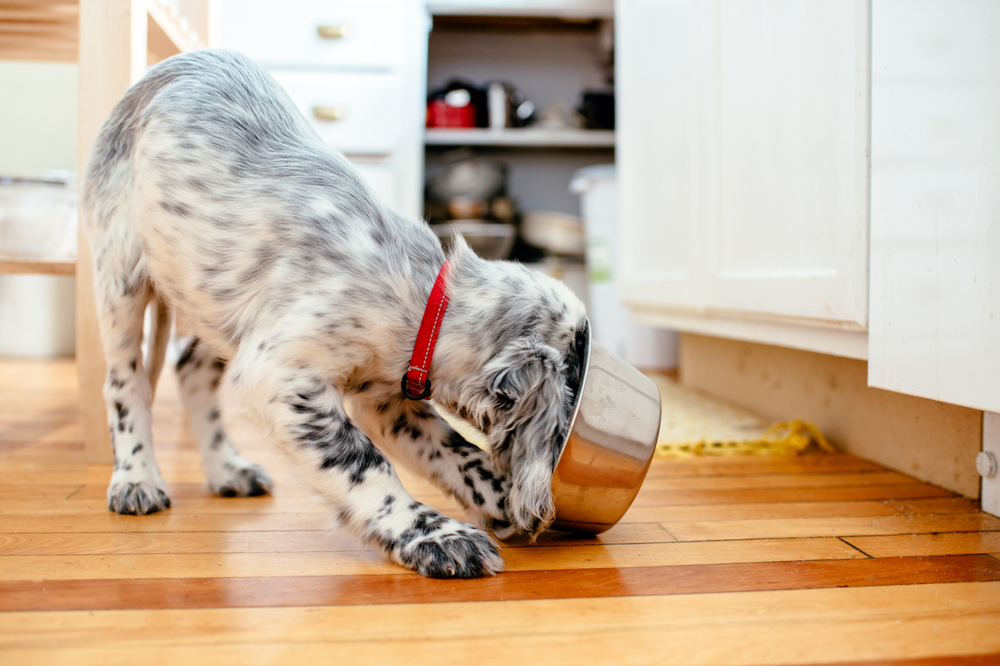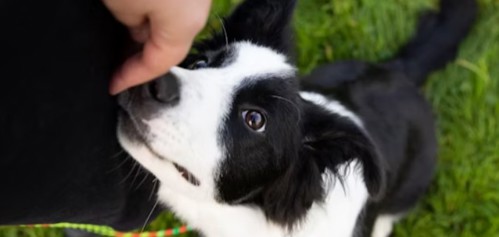
What is raw dog food?
Raw dog food also known as the “BARF” diet, which stands for Biologically Appropriate Raw Food (or Bones And Raw Food). It usually includes foods like raw meat, bones, offal and sometimes fruits and vegetables.
There are two types of raw dog food diets: homemade and commercially prepared. They aim to mimic the diet that wolves and canines would eat, if they were living in the wild.
Is raw dog food good for dogs?
When it comes to how healthy a raw dog food diet is, there’s a lot of debate between veterinarians, pet nutritionists and dog owners. Those in favour of raw dog food claim that it offers a number of healthy benefits for dogs, including:
- A shinier coat and healthier skin: thanks to the diet’s high-quality protein sources, as well as essential fatty acids.
- Healthier teeth: chewing on raw bones is good for cleaning a dog’s teeth and gums, as it helps prevent the build up of tartar, which causes gum disease.
- Better digestion: a raw dog food diet can give relief to some dogs with sensitive stomachs.
- More energy: fans of the raw dog food diet claim that their pets are more energetic and vital overall.
However, not everyone is in favour of the raw dog food diet. Some veterinarians and nutritionists raise some important potential risks that come with dogs eating raw food.
- Bacterial contamination: harmful bacteria like Salmonella and E. coli can be found in raw meat and bones. This can pose quite serious health risks not only to dogs, but also to their owners, who are handling the food.
- Nutritional imbalances: Dogs have very specific nutritional needs based on their age, size and activity level and it can be difficult to meet those needs effectively when preparing a dog’s diet at home. It requires a lot of thought and careful planning to ensure dogs don’t find themselves getting too much, or too little, of the nutrients they need.
- Choking hazards or broken teeth: Chewing on bones can be good for dogs’ dental health, but it’s important that they chew on the right types of bones, and that they’re properly supervised. When things go wrong, it can lead to damaged teeth, choking or gastrointestinal blockages.
- Puppies and dogs with weakened immune systems: Puppies grow rapidly and are energetic, so it’s important that they’re receiving the right nutrition to meet their needs. For dogs that are immunocompromised, they may be more susceptible to the risks that come with a raw dog food diet.
In addition to the risks, there’s also the time and cost involved in preparing raw dog food.
What should I consider before switching my dog to raw dog food?
Ensure your dog’s raw food diet will give them complete and balanced nutrition. This may involve careful planning, research and the addition of supplements to be sure that your dog is getting all the nutrition they need.
The best lifetime dog insurance
Protect your dog with the UK's Number 1 pet insurer, with up to £25,000 cover for vet fees.
How much raw dog food should I feed my dog?
The amount you feed your dog should take into account your dog’s age, breed, size, activity level and their specific nutritional needs. Here are some tips to help guide you.
- Speak to your vet first.
- Calculate your pet’s daily portion. As a guide, dogs should consume 2-3% of their body weight in raw food each day. So if your dog weighs 10kgs, they should eat 200-300 grams of raw food daily.
- How active is your dog? Active dogs need to eat more. Make sure your dog is getting the right amount of calories to maintain their weight.
- Think about your dog’s breed and age. Older dogs, as well as puppies, have very specific nutritional requirements.
- Make sure your dog’s diet includes a variety of protein sources, organs and bones, plus fruits and vegetables too, if your dog likes them.
- Monitor your dog’s health. Check their weight, coat and general health. If you spot any changes that worry you, speak with your vet.
Does your dog have any allergies?
If so, they may be sensitive to some raw ingredients. Monitor your dog as they begin the new diet and ensure they are tolerating the ingredients and that there are no adverse reactions.
Be conscious of the risks.
Make sure you’re up to speed on how to handle and prepare raw food safely. Be proactive and cautious when it comes to the risk of choking hazards and dental issues caused by chewing on bones.
Put in the time and effort.
Be aware that it can take time and money to ensure your raw dog food diet provides them with everything they need. There are some commercially produced raw dog food diets which may be worth considering, if you’re short on time. Be realistic about the amount of time and money you can spare before you commit to this new feeding regime.
Does a raw dog food diet fit with your lifestyle?
Do you travel a lot? Do you have a busy schedule? Think about your own routine and how you would be able to accommodate the switch to a raw dog food regimen.
Bottom line - your dog’s health and well-being is the most important thing. If you do decide to feed your dog a raw diet, it should ultimately be for their benefit.
Find a vet near you
If you're looking for a vet practice near you, why not visit the Royal College of Veterinary Surgeons' Find a vet page.
Think your dog may be affected?
If you're worried about your dog's health, always contact your vet immediately!
We are not a veterinary organisation and so we can't give veterinary advice, but if you're worried about any of the issues raised in this article, please contact your local vet practice for further information

